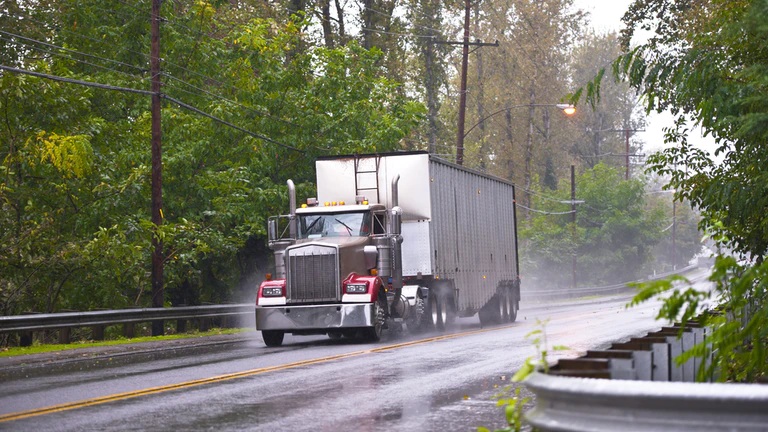When natural disasters strike, fleets should turn toward preparation, coordination and safety.
Habits are hard to break. As a former California Highway Patrolman (CHP), I made a habit of checking the state’s official list of natural disasters. I knew that the CHP would have a role in responding to them. Most often we dealt with earthquakes, floods, and avalanches back then, but this year it’s wildfires. Since the beginning of 2020, over 3.1 million acres of California have burned. That’s 26 times more than in 2019.
California is not alone with wildfires. They’ve also caused significant problems in Oregon, Washington State and Idaho. Plus, hurricanes and tropical storms lashed the Gulf Coast this year.
In my CHP career, I often directed fire crews and emergency responders toward active sites and re-directed motorists and trucks away from dangerous smoke-filled roads. Today, though, carriers need to temper some habits of their own, such as perseverance and completing the mission no matter the obstacle. When natural disasters intervene, the focus must instead turn toward preparation, coordination and safety.
Preparation
Natural disasters mean road closures and detours. Prepare by checking road conditions through state and federal DOT websites for emergency-related road closures and other delays. Go to Ready.gov for severe weather alerts. Dispatchers and drivers can also get emergency and disaster alerts delivered to their mobile device.
Carriers should make sure their dispatchers and drivers have these sources and information. Drivers should be reminded to pull safely off the road before looking at websites or dialing 511 for local road closures.
And as carriers prepare for these situations, they should make sure their drivers have the resources, tools and clothing appropriate to the weather in case Mother Nature shuts down further travel.
Coordination
During natural disasters, law enforcement might tell drivers to stop, re-route or await further directions. Carriers should remind drivers that officers work to ensure the safety of the motoring public and to treat them with patience. Law enforcement did not create the situation, they simply want everyone out on the road to get to their destination safely.
Law enforcement, first responders, fire crews and other emergency officials deal with rapidly evolving conditions, especially during wildfires. Their goal is the same as yours – safety. It may take a bit longer than desired but everyone needs to do their part to ensure a safe arrival.
Safety
Natural disasters often bring an odd mix of operational limitations, such as road closures and detours, along with relief from some of the usual regulatory constraints. Federal and state governments may relax or waive some regulations to facilitate emergency response. For example, officials may relax truck size and weight limits so equipment and materials can get to affected communities. Government may also offer flexible hours of service so truck drivers can get home despite reduced road conditions and delays.
Both the operational limitations and the regulatory relief support efforts to preserve safety. Regardless of what the law says, or what temptations a deserted open road may offer, drivers must stay safely within the limits of their equipment and their own physical condition. When the Federal Motor Carrier Safety Administration allowed hours of service flexibility for emergency deliveries early in the coronavirus pandemic, that flexibility came with the reminder to motor carriers that tired drivers must be allowed to rest.
When natural disasters strike, we should temper our habits with the realization that life will not be business as usual. We must flip a switch and instead think preparation, coordination and safety. That will get us through to a brighter day, untouched by the smoke of wildfires.
Steve Vaughn is the vice president of field operations at PrePass Safety Alliance, the provider of PrePass weigh station bypass service. Vaughn served nearly three decades with the California Highway Patrol and is a past president of the Commercial Vehicle Safety Alliance.
By Steve Vaughn
CUT COTS OF THE FLEET WITH OUR AUDIT PROGRAM
The audit is a key tool to know the overall status and provide the analysis, the assessment, the advice, the suggestions and the actions to take in order to cut costs and increase the efficiency and efficacy of the fleet. We propose the following fleet management audit.




